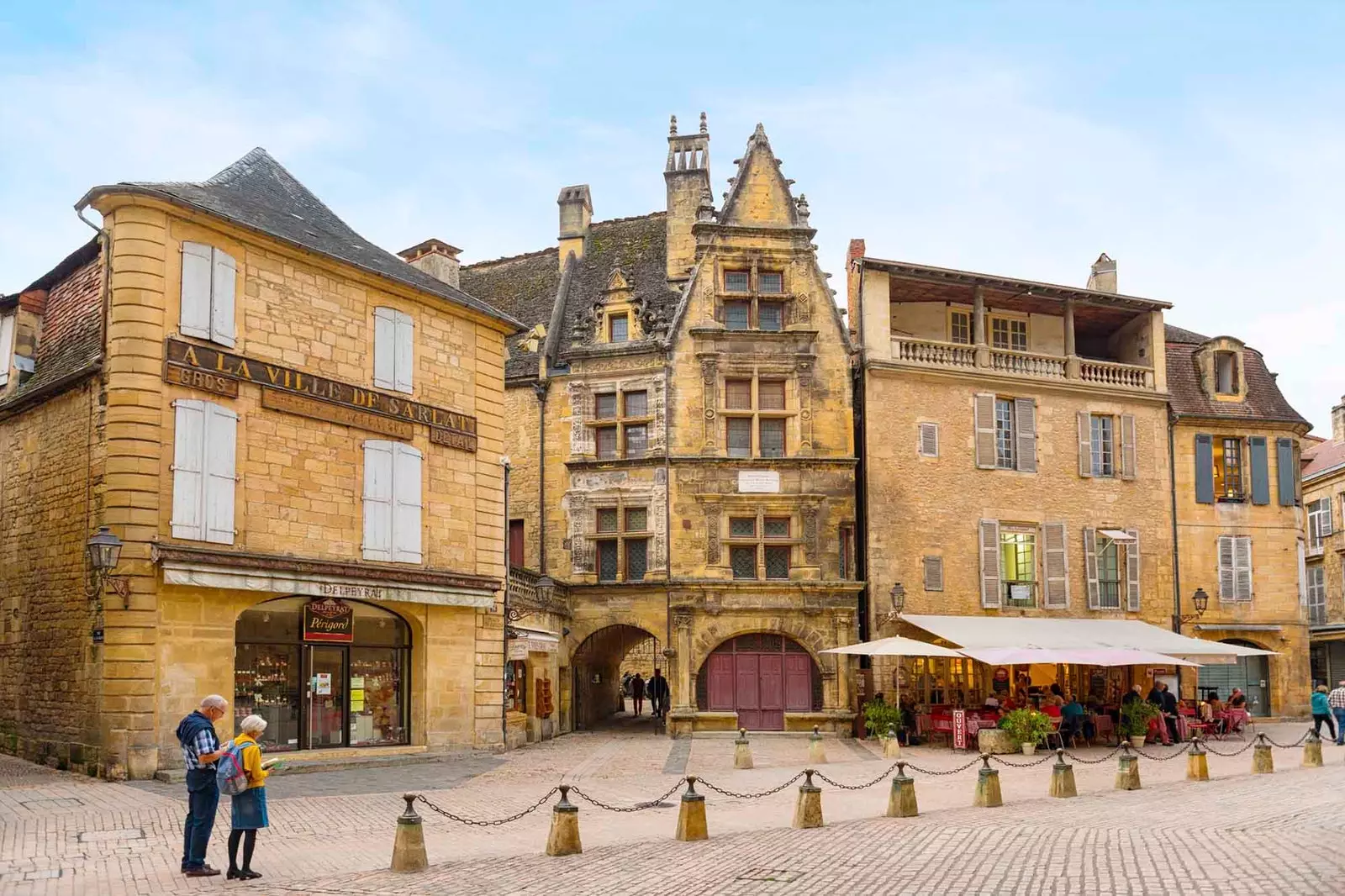
The Black Perigord villages, like Sarlat, will win you over
Located relatively close to Spain, the region of the New Aquitaine it offers a lot. its capital, Bordeaux , recognized as a World Heritage Site by UNESCO since 2007, has a strategic location next to the Landes Sea, surrounded by vineyards and with the Garonne River running through it.
But Bordeaux is, above all, a pleasant, multiracial city, where bars, restaurants and bookshops are dotted around cozy streets named after the old guilds that filled them, such as Rue des Argentiers (of goldsmiths), or Rue du Chai des Farines (of cereals) The denominations are from before the walls were demolished, and with it, the popular neighborhood of Saint-Pierre be open to the Place de la Bourse and the Garonne River, at whose port merchandise ships used to arrive; Today cruise ships dock.
Embarking on one of the barges that sail the Garonne is a great way to get to know the city, see the renovated façades of the docks and the stately homes where the so-called "stopper aristocracy" . We will pass under its bridges, and we will also observe the imposing rounded and sinuous building 55 meters high in the shape of a bottle? carafe? decanter? that houses The City of Wine Civilizations in the Bassins à Flot neighbourhood, the center whose purpose is to illustrate the universal dimension of the famous wine.
During the walk to the Tasting Workshop at the Bordeaux Wine School you cross Sainte Catherine street, three kilometers long, considered to be the longest pedestrian street in Europe and one of the liveliest, because of the confluence of the latest shops, cafes, pampering, stalls and people, many people, who They make it the most entertaining.
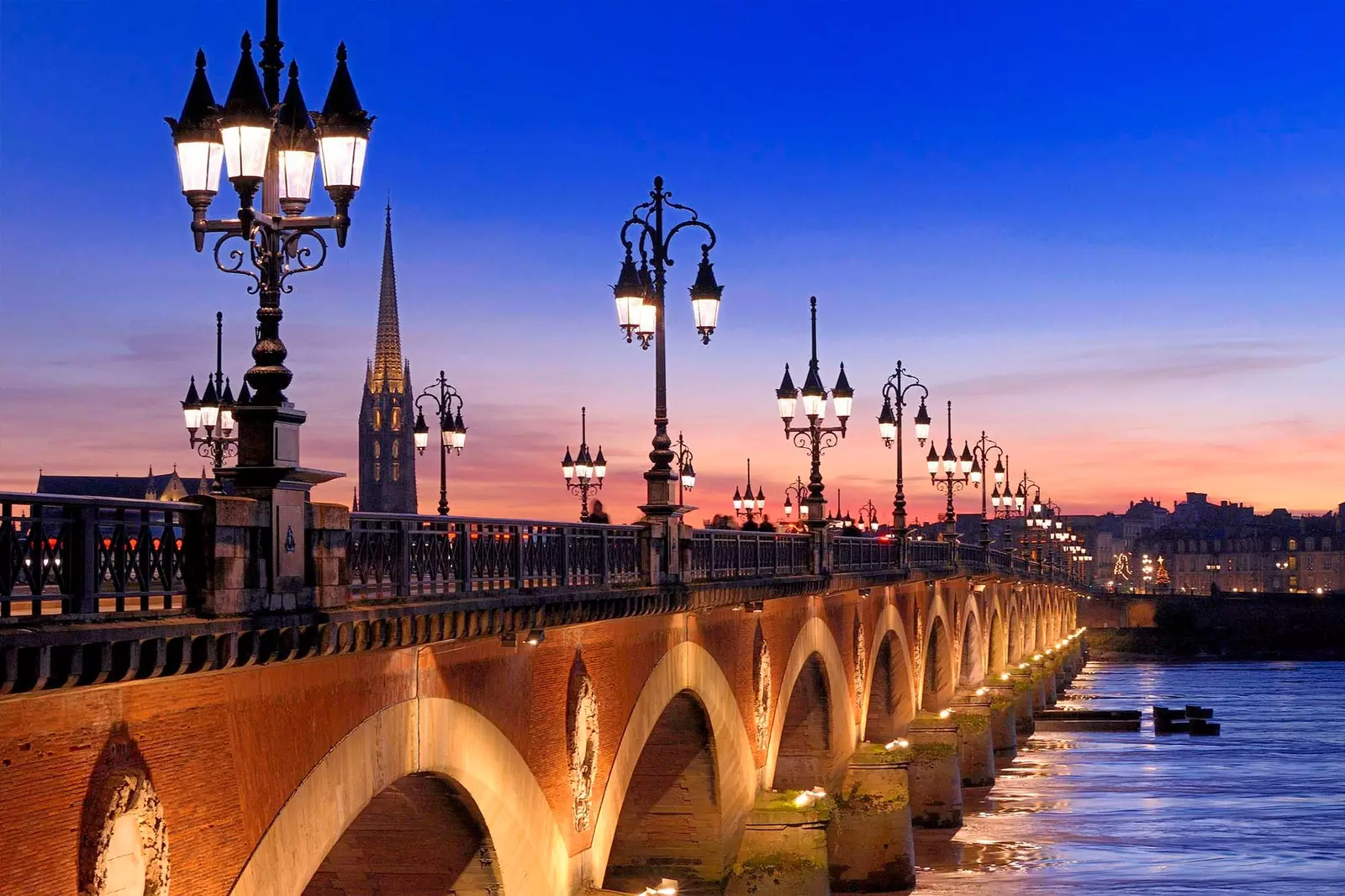
Crossing the Garonne River is quite an experience
Leaving Sainte Catherine, beware of the modern Bordeaux trams of innovative electrical power, which do not make any noise and run quietly and diligently throughout the city. It also goes through golden triangle , a neighborhood of illustrious personalities, where two emblematic buildings of the city are found, such as the Great theater that Marshal Richelieu had built in the 18th century and its neighbor the grand hotel , both neoclassical and both built under the mastery of the architect Víctor Louis.
From the wine tasting in the Council Interprofessionnel du Vin de Bordeaux (CIVB) leaves knowing a little more about this fascinating world that begins with the root of a vine and ends caressing the palate from a glass of wine. Across the river, the scene changes. The classic white city due to the porous calcareous stone of its buildings, is transformed into the darwin neighborhood , hipster , eco-sustainable, where creativity and the avant-garde prevail, as can be seen in the establishment General Magazine , with spaces dedicated to wine and organic products.
Compulsory visit to Saint Andre gothic cathedral , which is part of the ways of Santiago de France, and which is famous for the originality of its 50-meter-high bell tower, Pey-Berland, separated from the main building and crowned by Notre Dame d'Aquitaine. Dusk falls, and after passing under the beautiful cailhaus gate of the fifteenth century we reach the Stock Exchange Square , with its mirror of water that, if it is attractive during the day, is even more so at night: the darkness of the night makes the imposing buildings of the square, the lighted streetlights, the trams, and even the people reflect in the water with such clarity that it is difficult to distinguish reality from fiction.
BLACK PÉRIGORD: BETWEEN FORESTS AND TRADITION
Within the New Aquitaine region, Dordogne-Périgord It is the department that prides itself on having the largest number of most beautiful villages in France and an excellent gastronomy in which the black truffle, foie gras, mushrooms, or Périgord strawberries predominate. Divided into the four colors that define it, Périgord Noir, located in the southeast of the region, is the oldest. Its name comes from the darkness of the forests and the blackness of its truffles, just as the Green takes its name from its meadows and the White from its calcareous soil. The youngest of all, the Purple Périgord, honors the pigment of its vines.
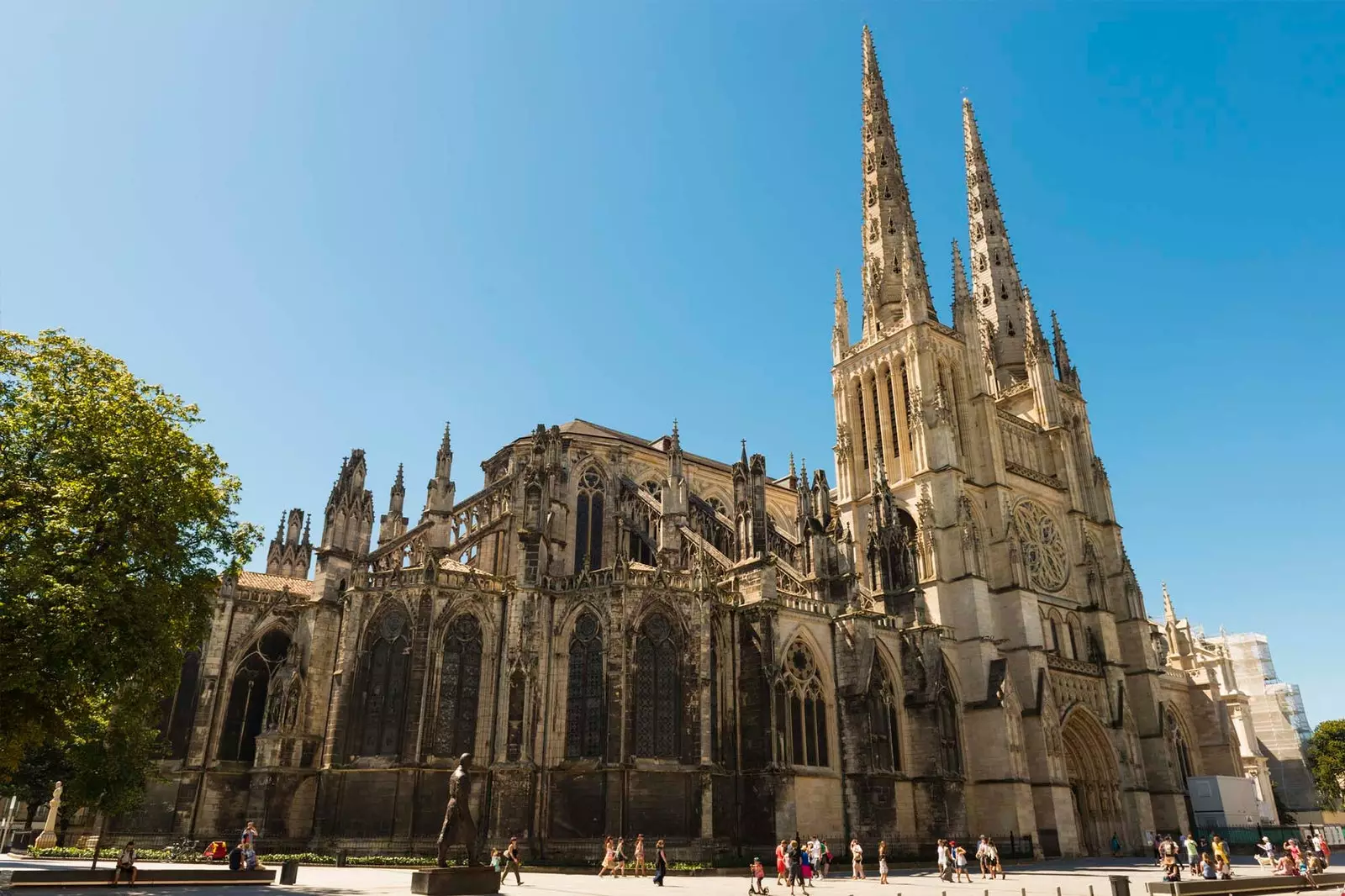
The gothic cathedral of Saint André
The first stop in the Périgord Noir is the town of La Roque Gageac which, inhabited since prehistory and nestled between the cliff and the Dordogne river, is considered one of the most beautiful in France. The yellowish stone facades and slate roofs of the houses protrude from the earth descending the hill like earthly appendages.
During the river ride in the typical barges of the area, the detail of the colorful shutters of the windows, the flowers and the gardens in which bamboos, bananas, figs, and even cacti grow, given the subtropical microclimate that is formed thanks to its privileged location. Dominating the heart of the town, stands out the Evening Manoir , former mansion of the famous historian and theologian Jean Tarde, not far from the ruins of a troglodyte fortress. And continuing with the friendly navigation of the barge, the palatial fortresses of the castles of Malartrie, Lacoste, Castelnaud and Marqueyssac are presented, famous for their centuries-old boxwood gardens and for their splendid views.
It competes in charm with La Roque Gageac, the medieval village of Beynac-et-Cazenac , whose origins date back to the Bronze Age. Through its steep alleys, the well-kept houses with exquisite gardens give onto the beynac castle, which, located at the top of the town, enjoys impressive views of the valley.
Its walls speak of Simon de Monfort , a fervent enemy of the Cathar movement, of Felipe Augusto and Juan sin Tierra, of Leonor de Aquitania and Ricardo Corazón de León, of the Hundred Years War and also of more playful reasons, such as his role in the filming of Joan of Arc, D'Artagnan's Daughter, and many other scenes from the world of celluloid.
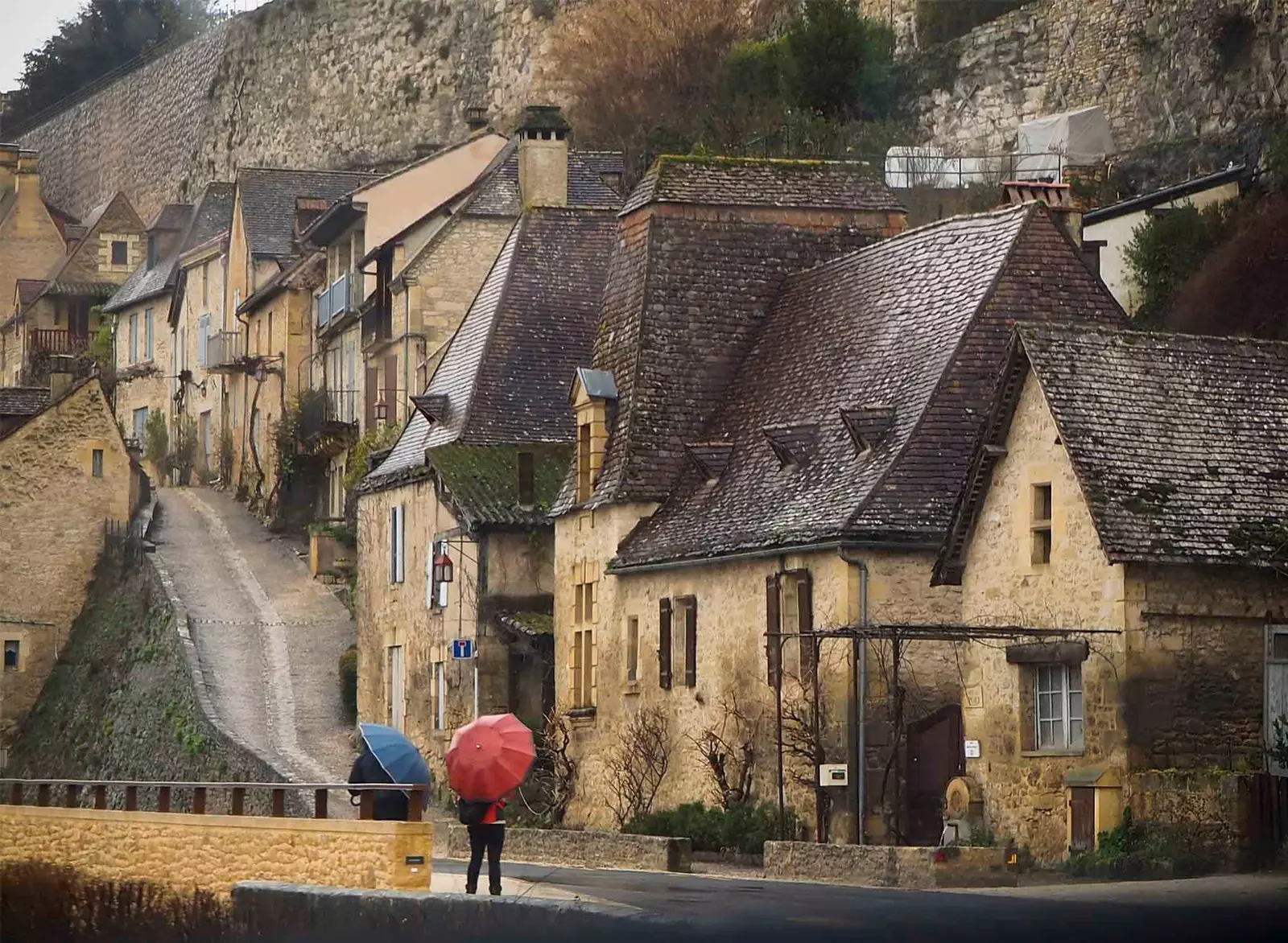
The medieval village of Beynac-et-Cazenac
SARLAT-LA-CANÉDA, THE HEART OF THE BLACK PÉRIGORD
The highlight of the Aquitaine tour is its capital. An elegant and fun medieval city that smells of truffles and tastes of foie, its pampered products, along with chestnuts, walnuts, mushrooms or strawberries, depending on the season. Considered as the first city in Europe for the number of protected buildings per square meter, every corner of Sarlat deserves a look both during the day and in the dim light that illuminates it at night.
It was once visited by Vikings and English who left their mark on the capital of Black Périgord. With the disappearance of his diocese during the Revolution, Sarlat went unnoticed for a few decades, until the so-called Malraux law of 1962 , namesake of the Minister of Culture, concerned with the restoration of protected buildings, resurrected it, returning it to the world.
H oy is one of the towns where more visitors arrive, eager to taste its exquisite gastronomy and contemplate the facades of the palaces with lauzes roofs, its Town Hall, the Recoletos church, and the magnificent transformation of the Santa María church into a covered market, the work of the architect Jean Nouvelle , Architecture Pritzker 2008.
LASCAUX, THE LARGEST MUSEUM OF PREHISTORIC ART
During one of his daily walks through the Vézerè Valley, Marcel Ravidat , accompanied by his Robot's dog, he saw how he was digging in a hole that attracted his attention. Something warned young Marcel that this was not just any sinkhole, and he returned accompanied by friends and loaded with utensils.
After delving into the cave, the quartet discovered, in the fall of 1940, one of the most important prehistoric finds. Bulls, deer, chamois, brown bears, bison and horses are the cave testimony of those Paleolithic Cro-Magnons who reflected their way of life in their paintings.
The grandiose discovery was opened to the public in 1948 and closed in 1963 as calcite spots appeared due to microorganisms and human respiration. That's why he was born Lascaux II , a magnificent reproduction of the caves, Lascaux III a traveling exhibition that goes around the world and Lascaux IV, the new replica of the genuine caves.
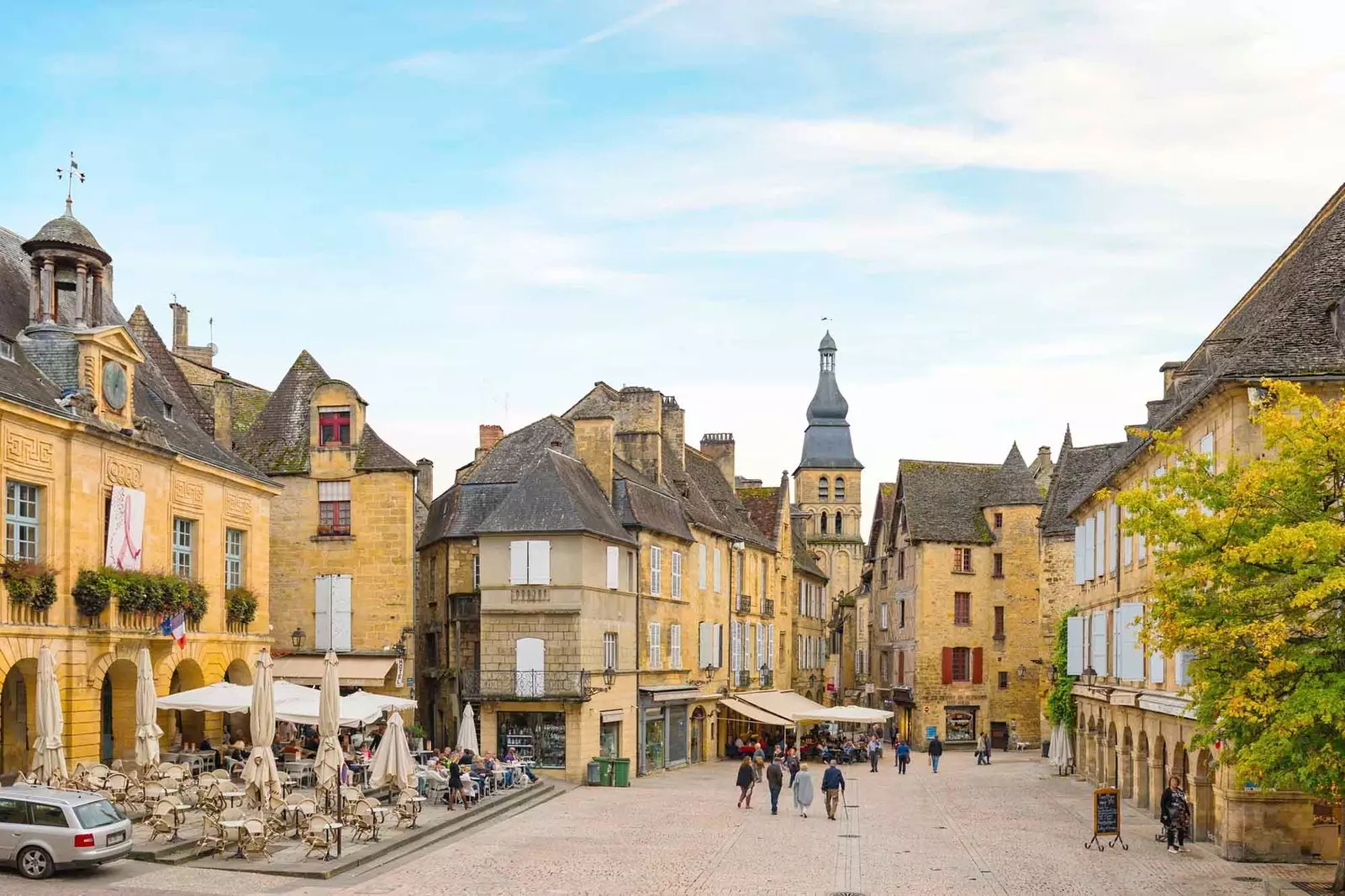
Sarlat-La-Canéda, the heart of the Black Périgord
